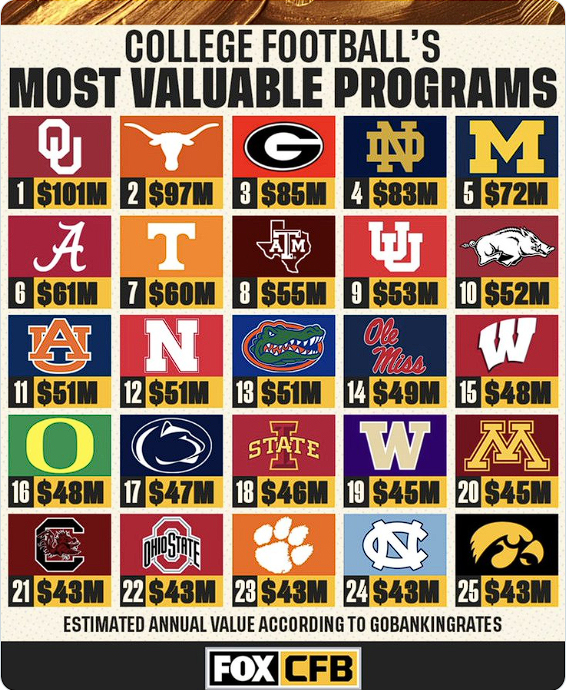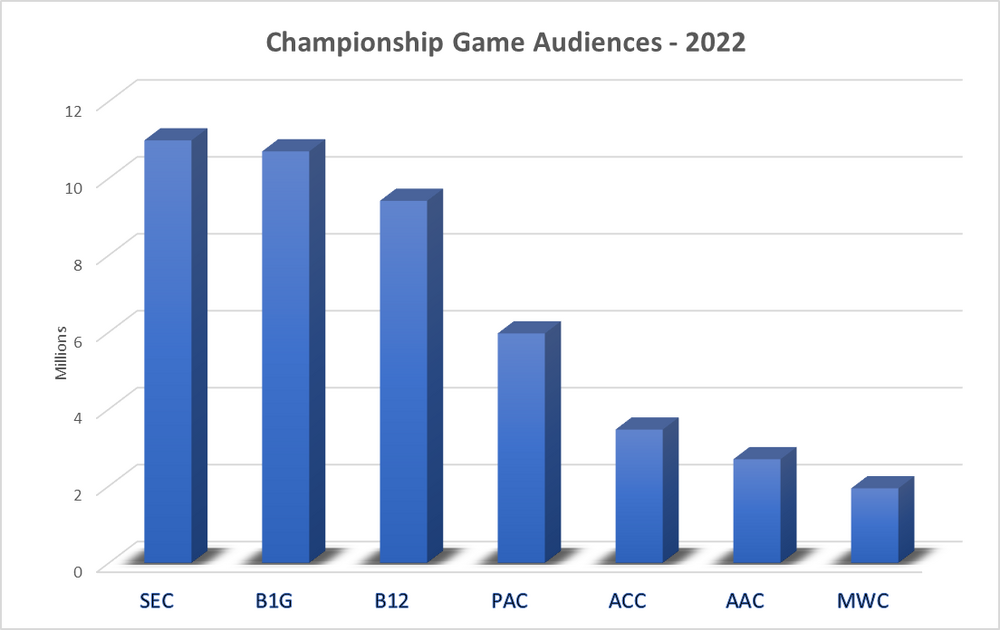Yeah, its not though. USC and Oklahoma's situation is not Texas' situation, by any stretch of the imagination.
First, a renegotiated deal in the Big 12 with Texas/OU would have netted around $60m per school, about 20% less than the B1G/SEC, BEFORE LHN, which at this point is adding about $18m on top. So that's $78m. The Big Ten/SEC are looking at $75m, reaching $100m after additional moneys like the NCAA/playoffs/etc that we're not adding in at this point. There are schools with a revenue threat here, but Texas is not one of them.
Second, in the last reported fiscal Texas already made $100m more than Mississippi State and $80m more than Illinois - also $80m more than USC and $90m more than UCLA. Texas would have made more without a TV deal, without any conference money - just from tickets and boosters, then nearly every school. The athletic department is that that sound. Even making that B1G TV deal, none of those schools will catch Texas without a TV deal. It's not the same game. Outside big gifts making yearly numbers look strange, only Ohio State is really in the +$200m/year revenue tier as Texas. Michigan and Alabama are all within throwing distance, everyone else has some work to do, even with their advantages.
Third, in that same reporting period, Texas ran with a $30m profit - or a 17% margin. That's the size of Texas State's entire athletics budget and almost half of teams like Washington State or Oregon State. So making $20-30m more is going to do what exactly? If expenses are already covered by a sizable amount, and you're pretty much already buying everything you can, what is $30m more going to do? Schools cannot provide NIL directly, so its not that. Put another TV in each locker?
What this is about for Texas is the most important thing in TV contracts.... exposure, period. Playing Alabama this year provided more exposure than the entire B12 schedule, including the OU game. Exposure is like free marketing, and it is the key to all of this because it adds up to billions in value to the entire university, not tiny little millions of dollars in a yearly check. With the move, Texas will now have like 4 Red Rivers a year, instead of one. THAT matters. Even if moving to the SEC paid nothing, the exposure is worth it and then some.
Exposure does more than just help schools, exposure is what drives recruiting. The exposure the SEC receives is much, much higher than the Big 12. Only the Big Ten is close. A&M saw an explosion of exposure moving to the SEC and it started to drain long held advantages. In 2010 Texas had 21 blue chips in that class, in 2014 they had 8. There were more blue chips from 2010-2012, than 2013-2016. And a lot of those went to A&M and other SEC teams. Granted, still the 800lb gorilla in the state, but there are now schools who were getting more exposure coming in to snipe players they never could sniff before.
So, while Texas doesn't need more money, is Oklahoma moving for money? Definitely. They're top ten revenue, but they spend all they make. Most importantly though, they rely heavily on being 2 hours from DFW and are at greater risk of losing out of top end talent without more exposure. Without Texas their recruiting goes to shit. This is why they choose the River over their long time rivalry with Nebraska when they joined the Big 12. Big game is nice, but long term health is all about recruiting.
The only way increased revenue matters here for Texas, literally the only way, is if the P5 moves to a situation where they are paying players directly. The Big Ten has hinted it's on its radar. Once that happens, this entire game changes, again. And while the Indianas and UCLAs of the world will be positioned better to handle it than before, they still won't be able to compete with Ohio State, Michigan, Alabama, or Texas.





